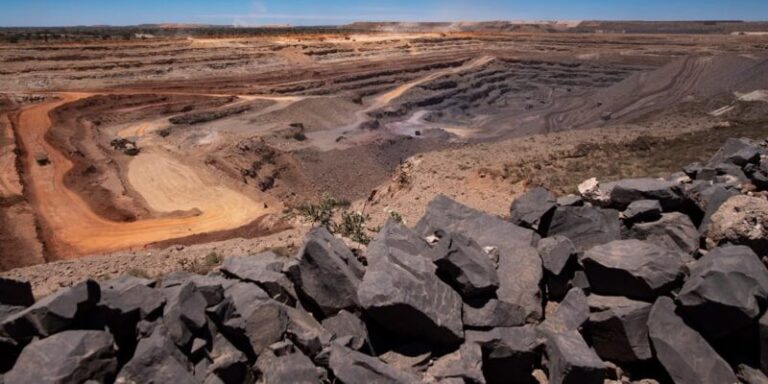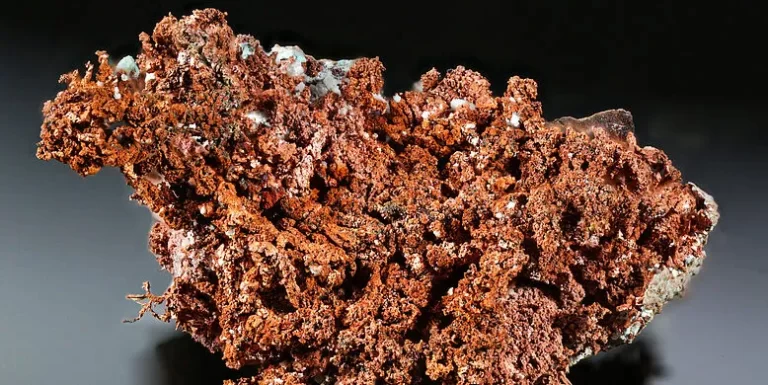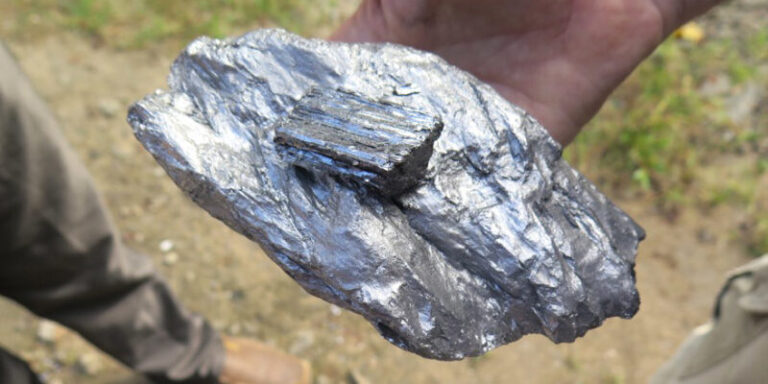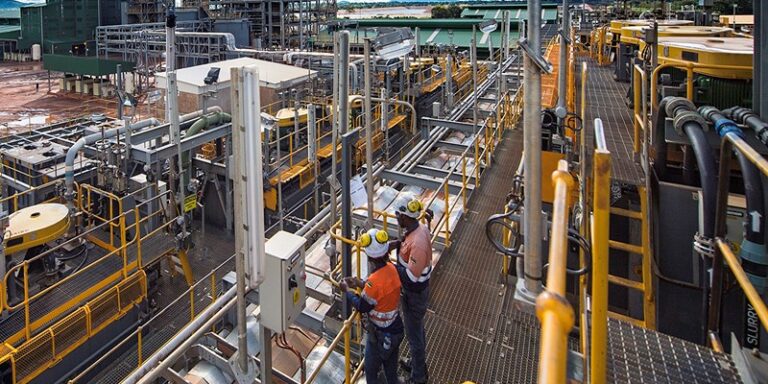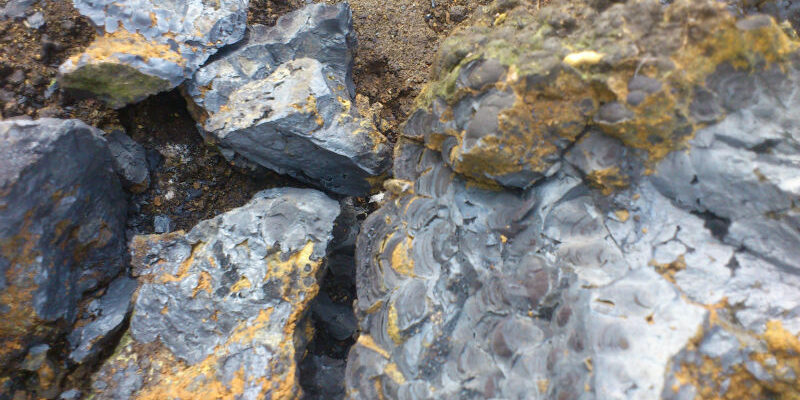
What is manganese?
According to the Australian department for energy and mining, there are over 300 minerals that contain manganese compounds (Mn).
Still, by far the most versatile and often economically significant are the manganese oxides, psilomelane, cryptomelane, pyrolusite, and wad (manganiferous earth).
Meanwhile, manganese nodules are small layered rocks mostly made up of iron oxide and manganese. These pebble-like rocks are often found in vast quantities and contain valuable metals such as cobalt, copper or nickel, making them appealing for cultivation.
Pure manganese is an extremely brittle, allotropic metal with a silver-grey appearance. It is not found as a free element in nature, but rather found in minerals in combination with iron.
According to Britannica, a significant proportion of the manganese manufactured globally is used in the form of ferromanganese and silicomanganese alloys for steel and iron production.
When manganese is added to produce an alloy, it results in a strong, hard, wear-resistant material.
As reported by Jefferson Lab, manganese was discovered by Johan Gottlieb Gahn, a Swedish chemist, by heating the mineral pyrolusite with charcoal.
Currently, most manganese is still acquired from pyrolusite. Nevertheless, it is usually burned in a furnace with powdered aluminium or is treated with sulphuric acid to form manganese sulphate, which is then electrolyzed.
Manganese uses in industry
According to the Proceedings of the National Academy of Sciences of the United States of America (PNAS) approximately 80-90% of all manganese is consumed by the steel industry.
On average, steel contains around less than 0.6 weight percent of manganese, in particularly high strength steels this might exceed 10%.
Manganese is a crucial element in the production of steel, and its predicted future growth in steeling is only estimated to grow.
Reuters reported that the dominant cathode chemistry in the auto sector is nickel-cobalt-manganese (NCM).
Manganese has therefore gained entry into the lithium-ion battery industry, maintaining a space as one of the key components of electric vehicle (EV) batteries.
Manganese is essential to the growing EV market as it acts as a stabilizer in NCM structured lithium-ion batteries, ensuring the battery operates efficiently at high temperatures.
Failure to produce adequate amounts of manganese to cope with the inflating demand could risk the delay of transitioning to an all-electric fleet or even cause the price of EVs to surge, which will naturally also cause manganese prices to rise, directly affecting the automotive sector.
How is manganese mined?
The first and most common method of manganese mining is shallow open-pit mining. The Northern Territory mine, owned by South 32 (ASX: S32), is located on the island of Groote Eylandt near Australia’s Gulf of Carpentaria.
The mine is one of the world’s largest producers of manganese and has generated more than 115Mt of manganese ore and concentrate since June 2018 by utilizing this open-pit mining method.
Manganese can also be mined underground, the Chiatura Manganese Mine, owned by Georgian Manganese LLC, located in the town of Chiatura, Georgia, utilizes both open-pit and underground mining methods to extract manganese.
Underground mining is often used when the manganese ores are too deep to mine profitably by open-pit methods.
In return, this is the most important manganese ore, as it is a high enough grade to cover the more expensive underground mining costs.
Britannica explains that natural manganese is processed by hydrometallurgical and electrolytic processes. Meanwhile, ferromanganese and silicomanganese are manufactured by smelting ores, often in an electric furnace.
Where is manganese mined?
South Africa
The Observatory of Economic Complexity released data placing South Africa as the world’s leading producer and exporter of manganese ore in 2019.
The report found that South Africa holds some of the most important manganese deposits in the world, accounting for 30% of worldwide production and nearly 50% of global exports.
The most well-known world manganese resources are located in these two South African mines: South 32’s open-cut Mamatwan mine located in Northern cape, South Africa
Assore Limited’s (JSE: ASR) underground Black Rock mine located in Kuruman, South Africa
According to Statista, the production volume of manganese in South Africa was around 6.64M metric tonnes.
Australia
Following South Africa, most manganese mining is found in Australia. In return, this positions Australia as the world’s second-largest major manganese producer.
According to the Australian government, the country’s manganese production increased to 7.5MT in 2019, a 7% increase from the previous year’s 7Mt.Two of the most significant manganese mines in Australia are:
South 32’s open cut Northern Territory mine, located on the island of Groote Eylandt, Australia
OM Holdings Limited’s (ASX: OMH) open cut Bootu Creek mine located in Northern Territory, Australia
China
China is third on the list of the most substantial global producers of manganese. In 2017, a huge reserve containing an estimated 203Mt of manganese ore was discovered in Guizhou province.
Therefore, China has positioned itself in a favourable position for manganese processing and mining, building on it’s already expansive level of natural resources. One of the most significant manganese mines in China is:
The Wafangzi mine, located in the north of China, frequently mined by giant manganese producer Chaoyang Wafangzi Fuli Manganese Mine Limited
The value of manganese
The manganese market has experienced volatility over the years. The Assay reported price spikes in 2018 as a direct response to the news that Ningxia Tianyuan Manganese Industry (TMI) had received financing from the asset manager China Huarong that failed to meet regulations.
As shipments were halted, the global price of manganese ore reached US$5.3 per metric tonne CIF.
However, S&P reported that manganese experienced an extreme low in 2019, with prices per dry metric tonne reaching as little as US$3.27.
The reason for this was reportedly due to the global oversupply of manganese ore, further exacerbated by COVID-19, which reduced steel demand from the construction industry as many construction operations were delayed worldwide.
The DMTU price of manganese soared in Q2 of 2020 as pressure from the pandemic eased, but the risk of oversupply still loomed, causing prices to stabilize into Q3 and Q4.
The price of manganese has remained steady since late 2020 but is expected to rise in conjunction with increasing demand for electric vehicles.
SOURCE:theassay.com



